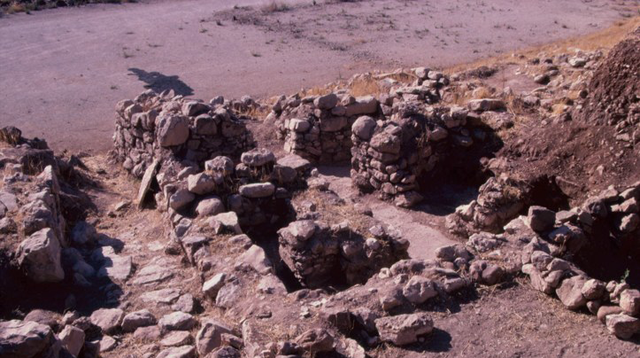Record added successfully


A well-known Neolithic site of Ain Ghazal is home to around half a million animal bone remains, although only a small fraction has been identifiable to species and kind of animals.
However, “much of this enormous amount has not yet been analysed”, said Professor Emeritus Gary Rollefson, elaborating that the animal bone is characteristically covered with a thick encrustation of lime deposits that hampers analysis.

“Nevertheless, a well-defined sequence of developments in animal exploitation is available for most of the cultural sequence at ‘Ain Ghazal. It is clear, for example, that goats were domesticated based on culling patterns and metrical analysis. Moreover, during ‘Ain Ghazal’s Neolithic phase, these animals accounted for roughly half of the meat in the diet, although more than 50 additional mammalian and other vertebrate species belonging to late 8th and early 7th millennia were also identified,” Rollefson explained
By the beginning of the Pre-Pottery Neolithic C(PPNC) period, the species inventory had plummeted to about a quarter of that range in terms of diversity, and by the beginning of the 6th millennium, domesticated species (including goat, pig, cattle and possibly sheep) provided more than 80 per cent of the meat protein, according to Professor Emeritus Zeidan Kafafi.
“This trend continued into the Yarmoukian period with less than 10 identifiable species, when domesticated animals accounted for over 90 per cent of the available meat. It is curious, in passing, that domestic dogs have been associated with Epipaleolithic sites in the Near East, dating as early as the 12th millennium, although no examples of domesticated dogs have been discovered in existing Neolithic sites in the Near East,” Kafafi noted.
Plant remains are relatively rich, the scholars said, with a characteristic combination of domesticated wheat, barley, peas, lentils and chickpeas, along with other resources such as figs, almonds, pistachios, and a variety of “weeds”, some of which may have had specific uses among the residents of ‘Ain Ghazal.
“Samples from these areas have not yet been analysed, although the abundance of charred materials, on the basis of cursory field examination, indicates a wealth of cereals and pulses. The situation for the PPNC and Yarmoukian periods is disappointing, however, since identifiable plant remains were extremely rare in the float samples,” Rollefson said, adding that charcoal, which only occurred in a small number of scattered particles, shows an increase of Tamarix representation, making it clear that animal dung was being used as fuel by the middle of the PPNC phase.
Moreover, excavations have produced an enormous amount of chipped stone tools and debitage. However, they have not been able to completely classify this material, Kafafi said.
“Perhaps the most important conclusion to be drawn from the fieldwork is that the southern Levant did not suffer a complete evacuation at the end of the 7th millennium, nor did agriculture become untenable as a subsistence strategy, resulting in the abandonment of permanent farming villages across the region south of Damascus,” Rollefson concluded.
--
Source: the Jordan Times.